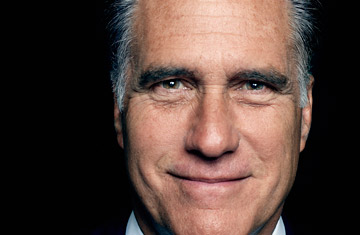
(4 of 11)
For all his success, Romney has said surprisingly little about how his investing experience might guide him in the White House. His broadly stated economic themes--budget cuts, low tax rates and less government regulation--follow tropes that have been standard for GOP candidates since well before Reagan, with or without Romney's private-sector credentials. Related positions on energy and education appear to be close cousins of those of President George W. Bush.
Even so, Romney's business record offers plenty of evidence about the way he thinks about problems, sets priorities and negotiates obstacles. But sifting the record requires a second look at his version of some of its pivotal events.
On the Staples deal, which he has made a touchstone of his campaign, he and his political team tell a story of success that followed from insight, decisiveness and courage to take the leap. By this account, a supermarket executive named Tom Stemberg had the big idea and Romney saw potential where others did not. His investment firm, then two years old, ventured Staples the funds that gave it "a chance to grow," as his campaign website puts it. In some of his television ads, the familiar red Staples logo appears onscreen over a script that touts the businesses he built. "Most people I spoke with thought it would never work," Romney writes in his 2010 campaign memoir, No Apology. "But they were wrong, and today Staples is what Tom dreamed it would be."
Stemberg endorses this account. "A lot of venture capitalists laughed," he tells TIME. They asked the Staples founder, "Who would care about saving money on paper clips?" For Romney, "one of the cheapest sons of guns I ever met in my life, the idea really resonated," he says.
But Romney was late to the game. Stemberg had told him that the average office worker consumes more than $1,000 a year in office supplies, a substantial market. Romney wanted evidence, and a lot of it. Eventually, one of his partners invited Stemberg to Bain Capital's spare gray conference room at Copley Place in Boston. "We have a problem with your analysis," the partner said, brandishing a bar chart. The firm had phoned 50 small businesses, which estimated expenditures of only $200 a year in supplies for the average employee. Stemberg stood his ground, and Romney's firm dug deeper. With no computerized records to tap, Romney sent his people door to door with adding machines to tally paper invoices. The average was closer to $1,100 than $1,000. Finally, Romney was sold.
But by this time, Stemberg said, "we must have had 15 or 20 different offers to finance our deal." He included Bain in a team of four firms because Romney had a reputation as "one of the best business advisers in America" and could offer skills as well as money. And so Romney did, remaining on the Staples board for 16 years.
There is no denying that Staples was a win for Romney's firm, whose investment of $2.5 million grew sixfold by the time Bain Capital sold its shares. Still, by his own account in the Staples video, he was not a pioneer but a laggard on the deal.
